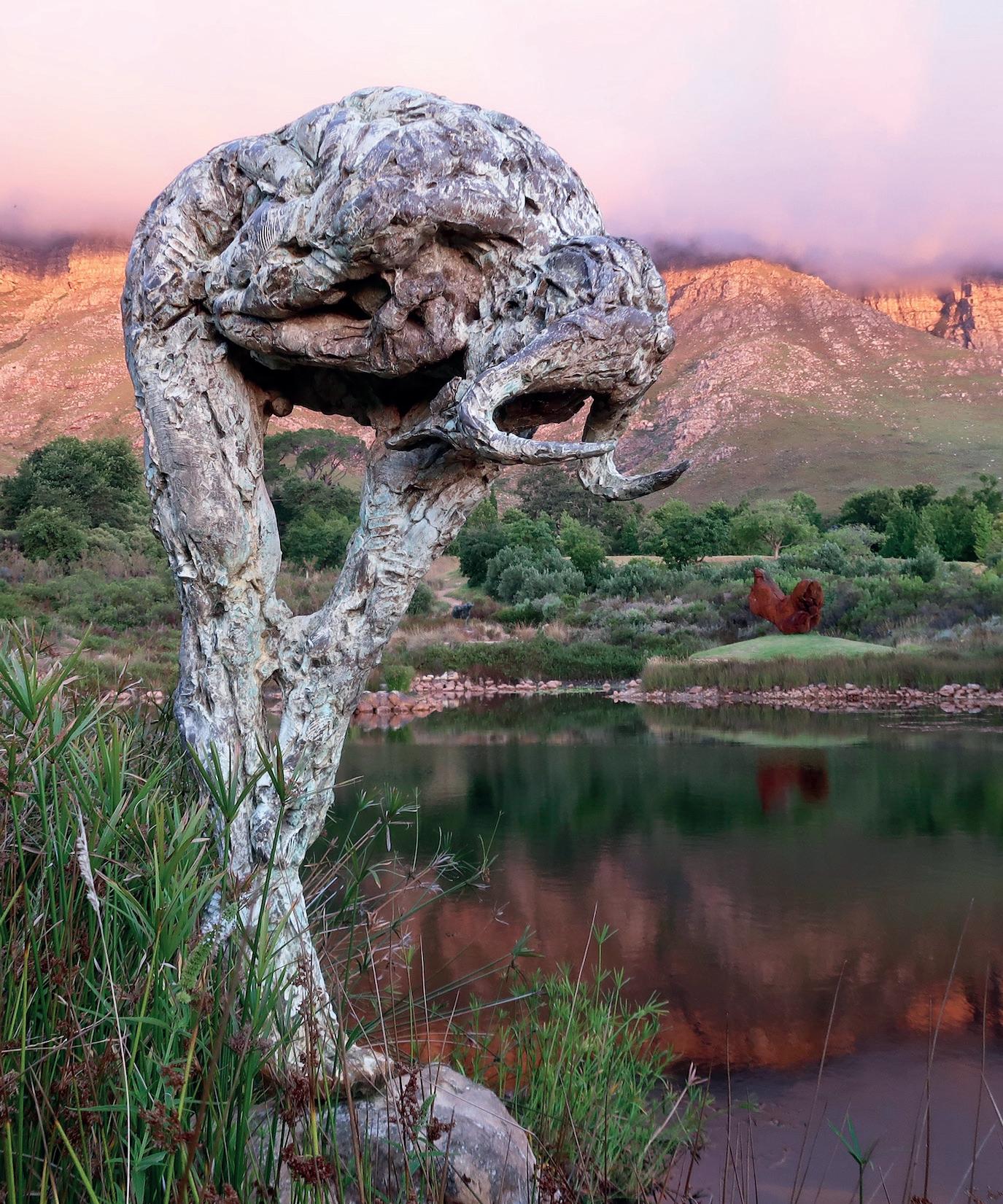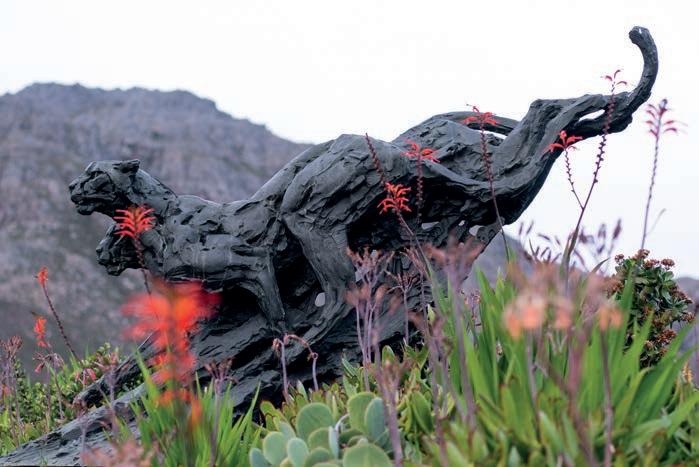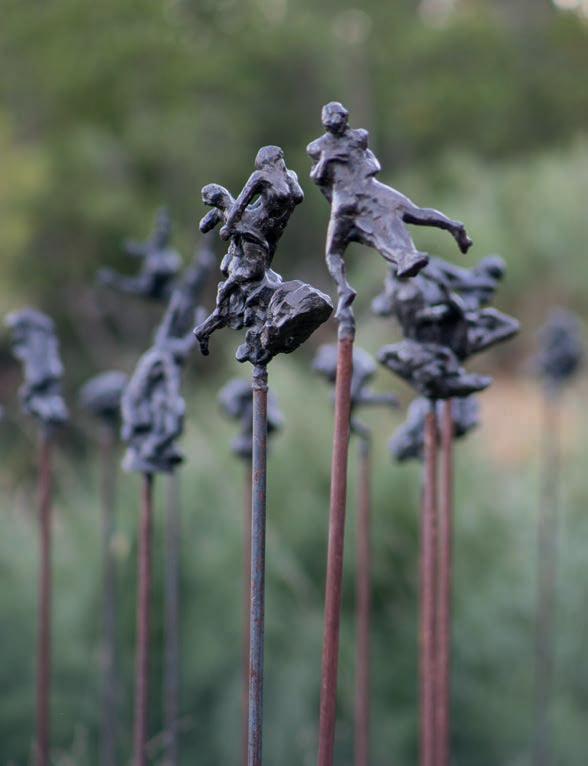
3 minute read
THE WILDERNESS WITHIN Dylan Lewis Sculpture Garden
The wilderness within
The Dylan Lewis Sculpture Garden straddles Stellenbosch's manicured gardens and the rugged mountains beyond the town. It's a destination, a must-visit experience to add to your bucket list. JENNIFER CAMPBELL
Advertisement
Dylan Lewis is widely recognised as one of the world's foremost sculptors of the animal form but has, in recent years, used the human form as a means of exploring our relationship with our inner wilderness. Dylan creates pieces that demonstrate both technical skill and conceptual complexity with an international career that spans two decades. Now, his work can be seen in the Dylan Lewis
Sculpture Garden in Stellenbosch — a space that provides a fitting and unique context in which Dylan's work can be experienced and understood.
THE PROJECT
The Dylan Lewis Sculpture Garden was not calculated. Rather, it emerged unexpectedly over time — Dylan sculpted a flat canvas of land, with all seven hectares shaped and moulded with an excavator according to his direction over several years. The scale of the project was unprecedented, although the principle of the practice remained much the same as his sculpture process. "I felt like I was walking through a large surface of one of my sculptures," he says of the project. As such, he applied the same techniques as he would for a smaller creation, working within the sightlines of the nearby mountains so that the garden formed part of a much larger composition.




THE THEMES
As Dylan worked on the garden, he realised that he was expressing something more than the physical. Throughout the process, he found himself returning to a theme that appears consistently in his work — the contrast between tameness and wildness. In the case of the garden, the amphitheatre created by the mountains represents the untamed wild, while the garden is manmade. "Exploring this tension allowed me to place the sculptures in the context in which they were created — as forms of nature," he explains. And, these are not the only contrasts that exist in the garden — the space is an embodiment


of life's dichotomies and the complexities of what it means to human. The sculptures express human emotion, its contrasts and complexities. "The human experience of a garden is often one of serenity and beauty — but what's happening on another level, beneath the surface and invisible to the naked eye is also a reality and just part of life. Nature is beauty, but it is also death, decay, destruction."
THE SPACE
The garden itself comprises more than 60 sculptures along four kilometres of paths. The garden's design was infl uenced by Japanese gardens and the Japanese wabi-sabi aesthetic — as such, it takes on a minimalist look with natural curves and imperfections. There is a focus on indigenous species and fynbos in particular. A pink 'heather hill' features a beautiful selection of ericas, buchus, birchleaved pelargoniums and Flats' silkypu s. Some particularly unusual varieties of erica were sourced from Kirstenbosch and planted along the edge of the lake.
Visits to the Dylan Lewis Studio and Sculpture Garden are by appointment only. To make a booking request, visit dylanlewis.com; call 021 880 0054; or email reservations@dylanart.co.za











